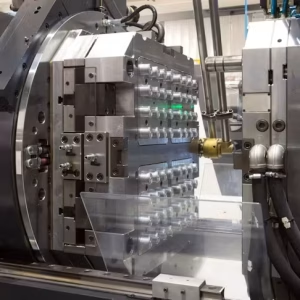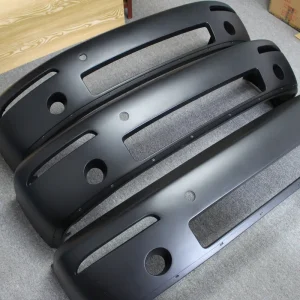Manufacturing plastic parts requires choosing the right 3d printing vs injection molding approach. Subsequently, understanding cost differences helps businesses make informed decisions. Moreover, both additive manufacturing and injection moulding offer distinct advantages depending on production requirements.
Understanding 3D Printing Technology
3d print technology builds objects layer by layer using digital files. Furthermore, this additive manufacturing process creates plastic parts without requiring molds or expensive tooling costs. Additionally, various 3d printing technologies exist including FDM, SLA, and SLS methods.
The 3d printer processes materials such as thermoplastic filaments and liquid resin. Consequently, 3d printed part production eliminates traditional manufacturing constraints. Meanwhile, printing technologies continue advancing with faster speeds and better material options.
Key 3D Printing Methods
Modern additive manufacturing includes several approaches:
- FDM – Melts plastic filament through heated nozzles
- SLA – Cures liquid resin using UV lasers
- SLS – Fuses powder materials with precise laser control
- PolyJet – Jets photopolymer for smooth surface finishes
How Injection Molding Works
Injection moulding melts plastic pellets into molten material. Subsequently, this heated plastic flows into precision injection mold cavities under high pressure. Therefore, injection molding machines create identical plastic parts with consistent quality.
The injection mold consists of matched steel or aluminum halves. Moreover, cooling channels solidify the plastic injection material rapidly. Consequently, injection molding vs other methods excels in high volume production scenarios.
Essential Injection Molding Components
Plastic injection molding requires several critical elements:
- Precision tool and mold design
- Industrial injection molding machines
- Temperature and pressure controls
- Thermoplastic material selection
- Advanced cooling systems
Real Cost Analysis Data
According to Xometry’s manufacturing data, 3D printed parts cost 10% to 20% less than injection molded parts for orders under 20,000 units. However, injection molding becomes more cost-effective around 40,000-50,000 parts.
Industry analysis shows that at 10,000 pieces, injection molding costs approximately $0.99 per part while 3D printing costs around $7 per part. Therefore, understanding volume requirements determines the optimal manufacturing method.
| Volume Range | 3D Printing Cost | Injection Molding Cost | Best Choice |
| 1-500 units | $5-15 per part | $15-50 per part | 3D Printing |
| 1,000-5,000 | $3-8 per part | $2-5 per part | Injection Molding |
| 10,000+ | $2-7 per part | $0.50-2 per part | Injection Molding |
Break-Even Point Analysis
Manufacturing experts at Fictiv report that injection molding becomes more economical than 3D printing above several hundred parts. Additionally, tooling costs typically range from $1,000 to $80,000 depending on part design complexity.
3d printing vs injection molding economics favor printing for:
- Prototype development phases
- Low volume production under 1,000 units
- Complex geometries requiring design freedom
- Rapid design changes during development
3d printing vs injection molding costs favor molding when:
- Production volume exceeds 5,000 units annually
- High volume of parts with consistent specifications
- Cost per part minimization is critical
- Long-term production stability is required
Material Properties Comparison
3d printing materials include diverse options such as PLA, ABS, and specialized resin formulations. Meanwhile, plastic injection supports extensive thermoplastic selections including polyethylene, polycarbonate, and engineering-grade materials.
NIST research confirms that additive manufacturing generates less waste than traditional manufacturing processes. However, injection molded parts typically demonstrate superior mechanical properties and surface finish quality.
| Property | 3D Printing | Injection Molding |
| Material Waste | Minimal waste | Higher waste generation |
| Surface Finish | Requires post-processing | Excellent out of mold |
| Strength | Variable, layer by layer weakness | Consistent, uniform strength |
| Design Complexity | Complex parts possible | Limited by mold constraints |
Production Timeline Differences
3d printing and injection molding timelines vary significantly based on project requirements. Furthermore, additive manufacturing offers rapid turnaround for prototype production.
3D Printing Schedule:
- File preparation: 2-4 hours
- Print parts production: 6-48 hours
- Post-processing: 2-8 hours
- Total: 1-3 days
Injection Molding Schedule:
- Tool design and manufacturing: 4-12 weeks
- Testing and refinement: 1-3 weeks
- Production run setup: 2-5 days
- Total: 6-16 weeks initially
Professional manufacturers like Tuowei’s rapid prototyping services specialize in accelerating both 3d printing and injection molding timelines.
Quality and Durability Factors
Injection molded and 3d printed parts exhibit different quality characteristics. Subsequently, injection molding can produce parts with superior surface finish and dimensional accuracy. Meanwhile, 3d-printed parts may require additional finishing treatments.
Formlabs testing data shows that modern SLA resins achieve comparable strength and stiffness to PET plastic. However, printed parts are often more suitable for functional testing rather than final production applications.
Industry Applications
3D Printing Applications
Additive manufacturing excels in specific sectors:
- Medical device prototyping and injection molding
- Aerospace lightweight complex parts
- Automotive prototype development
- Custom tooling and fixture production
- End-use parts for specialized applications
Companies like Tuowei’s medical equipment prototyping demonstrate advanced 3d printing capabilities for healthcare applications.
Injection Molding Applications
Plastic injection molding dominates mass production:
- Consumer electronics housing
- Automotive plastic parts and components
- Packaging and container manufacturing
- Household appliance components
- Industrial equipment parts
Cost Optimization Strategies
3d printing vs traditional methods requires strategic planning. Moreover, optimizing part design reduces material cost and production time.
3D Printing Cost Reduction
- Minimize support structure requirements
- Optimize build orientation for efficiency
- Select appropriate 3d printing materials
- Batch multiple parts together
- Choose optimal layer heights
Injection Molding Savings
- Design multi-cavity molds for higher output
- Minimize design changes after tool creation
- Select standard thermoplastic materials
- Plan adequate production volume
- Consider family molds for related components
Tuowei’s CNC machining services complement both 3d printing vs injection molding processes for comprehensive manufacturing solutions.
Advantages and Disadvantages Analysis
3D Printing Benefits
- No tooling costs required
- Rapid prototype creation
- Easy design changes implementation
- Complex parts with internal features
- Cost-effective for low volume production
3D Printing Limitations
- Higher cost per part at scale
- Limited material selection
- Layer by layer weakness potential
- Surface finish often requires treatment
- Slower for high volume needs
Injection Molding Benefits
- Excellent for high volume of parts
- Superior surface finish quality
- Wide thermoplastic material range
- Consistent part quality
- Cost-effective for large runs
Disadvantages of Injection Molding
- High initial tooling costs
- Expensive mold modifications
- Long tool development times
- Less design freedom
- Not economical for low volume
Future Technology Trends
3d printing vs injection molding technology continues evolving rapidly. Moreover, hybrid manufacturing approaches combine both methods’ advantages. Additionally, NIST research supports new standards for 3D printing design guidance to streamline production.
Emerging developments include:
- Metal 3d printing for production parts
- Microscale 3d printers for precision components
- Smart injection molding with IoT integration
- Advanced 3d printing materials with enhanced properties
Conclusion
3d printing vs injection molding decisions depend on specific project requirements including volume, timeline, and budget constraints. Furthermore, low volume production favors additive manufacturing while high volume applications benefit from injection moulding economics. Understanding these manufacturing method differences enables optimal production choices.
Frequently Asked Questions
What volume makes injection molding cheaper than 3D printing?
Injection molding becomes cheaper than 3D printing when producing more than 100 parts. The exact break-even point depends on part complexity and material requirements.
Which method produces stronger plastic parts?
Injection molded parts typically offer superior mechanical properties compared to 3d printed alternatives. However, modern 3d printing materials achieve adequate strength for many applications.
How long does each manufacturing method take?
3d printing delivers parts in 1-3 days while injection molding requires 6-16 weeks for initial tool creation. Subsequent production runs are much faster with molding.
Can both methods use identical materials?
Many thermoplastic materials work in both processes, though formulations may differ. ABS, nylon, and polycarbonate are common to both 3d printing and injection molding.
Which offers better design flexibility?
3d printing provides greater design freedom for complex parts with internal features. Injection molding has more constraints but offers excellent surface finishes and consistent quality.
References and Citations
- National Institute of Standards and Technology. “Additive Manufacturing.” NIST, 2024. https://www.nist.gov/additive-manufacturing
- American Society of Mechanical Engineers. “Y14.46 Product Definition for Additive Manufacturing.” ASME, 2022.
- Xometry Inc. “Cost Comparison Between 3D Printing and Injection Molding.” Manufacturing Resources, 2024.
- Wikipedia Contributors. “Injection Moulding.” Wikipedia, 2024. https://en.wikipedia.org/wiki/Injection_moulding
- Wikipedia Contributors. “3D Printing.” Wikipedia, 2024. https://en.wikipedia.org/wiki/3D_printing
- Formlabs Inc. “Race to 1,000 Parts: 3D Printing vs Injection Molding.” Manufacturing Analysis, 2024.
- International Organization for Standardization. “ISO/ASTM 52900:2021 Additive Manufacturing.” ISO, 2021.



